After months of preparation and anticipation, my husband and I were headed to Florence with our soon-to-be nine year old son and four and a half year old daughter in August of 2017. This was our first time flying to Europe with two children. On our 2007 honeymoon in Paris, we daydreamed about returning to Europe as a family and here we were ten years later with two kids embarking on our longest family vacation – two weeks. It was our first time to Italy and I had designed a family vacation that balanced culture with relaxation – la dolce vita.
We narrowed our focus on Florence, a nice sized city in Tuscany that would not overwhelm but where we would be immersed in history, art and beauty. This post will focus on the five full days spent in Florence. We were in Florence for four nights, took a train to Monterosso in the Cinque Terre region where we stayed for seven nights and then returned to Florence for three more nights before returning to New York.
This family travel guide is a breakdown of how I organized our vacation in advance of our trip and how we actually spent our time in Florence. Our mission when planning all of our family vacations is to balance the needs and interests of the children and adults while also prioritizing safety, comfort and ease. For more on the basic parameters for planning and implementing a successful family vacation in general, take a look at my complete family travel guide.
Flights to Florence
It is not possible to fly direct to Florence from New York so we took a connecting flight that went through Amsterdam and returned via Paris. On the way there, our connection was not as smooth as planned but we arrived in Florence mid-afternoon, a little later than planned, and ready to put this minor hiccup behind us. I booked this round trip flight with Delta through Priceline in February and paid $3,738.84 for the four seats.
Hotels in Florence
With the feeling that we were entering into the unknown since this was our first real adventure beyond our all-inclusive Caribbean vacations as a family, I wanted to ensure that the hotel accommodations would be top notch. After searching on Google and cross referencing on TripAdvisor for the best hotels in Florence, I came up with the Sina Villa Medici for the first four nights in Florence. Upon return to Florence from the coast and for the last three nights of our vacation we stayed at Hotel Torre di Bellosguardo. I chose these properties because they looked lush and relaxing and most importantly each had beautiful outdoor pools for the kids to enjoy after a hot day of sightseeing.
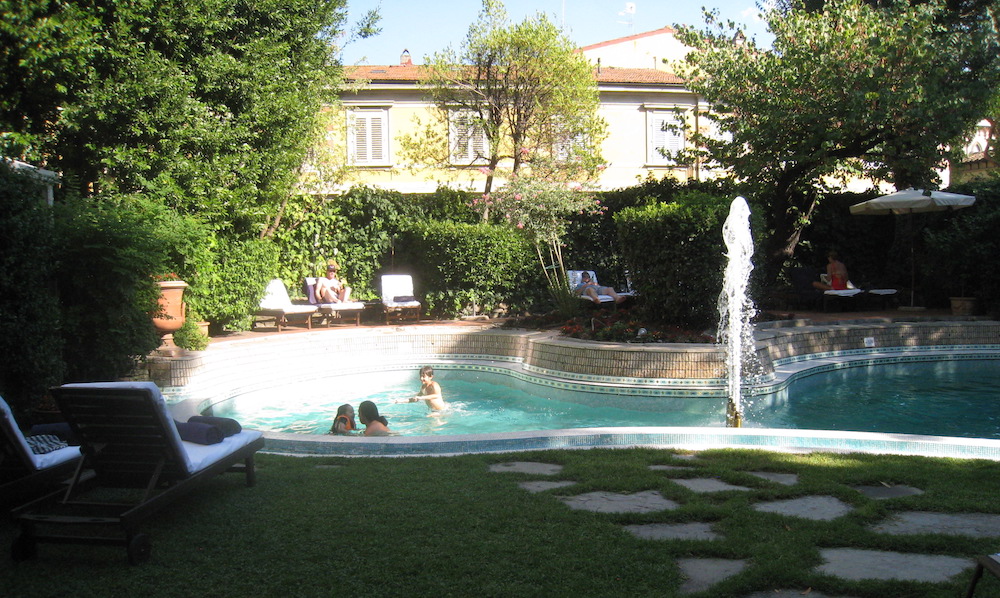
Sina Villa Medici is in a convenient location within walking distance to most sites, plenty of restaurants and gelato stands. We did take advantage of the hotel’s free shuttle to the areas of interest around Florence. If we returned to the hotel via taxi, we had to rely on restaurants to call a taxi for us, which never seemed to be a hassle when we asked for assistance. It is not possible to hail a taxi off the street as one may do in NYC nor is Uber an option in Italy. The pool attendant accommodated us with lounge chairs and towels when we arrived to swim late in the afternoon when it never appeared to be crowded. Having this time to unwind after a hot day of exploring added so much to our experience in Florence. At this hotel we had two adjoining rooms each with a queen size bed and two full bathrooms. The beds were very comfortable with soft linens and excellent pillows. The bathrooms were modern and sleek with soft towels, robes and toiletries that included conditioner for the hair, which I depend on for my long hair. The pool is set within a lovely oasis that feels intimate, as if we were on a private estate nestled in the serene surroundings of Tuscany. Overall, the rooms were clean, comfortable, quiet, tastefully updated and safe as was the property and I would happily return for future visits. I booked this hotel at the beginning of February for this four-night stay in mid-August, which cost a total of $2,492.12 ($434 per night plus additional charges to the room during our stay).
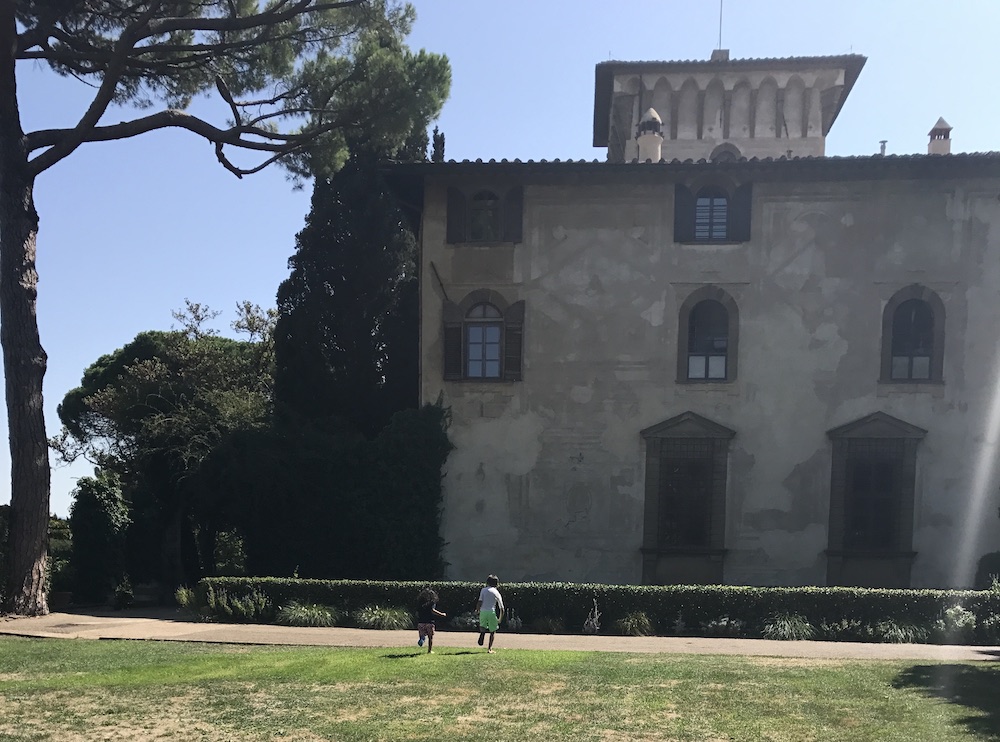
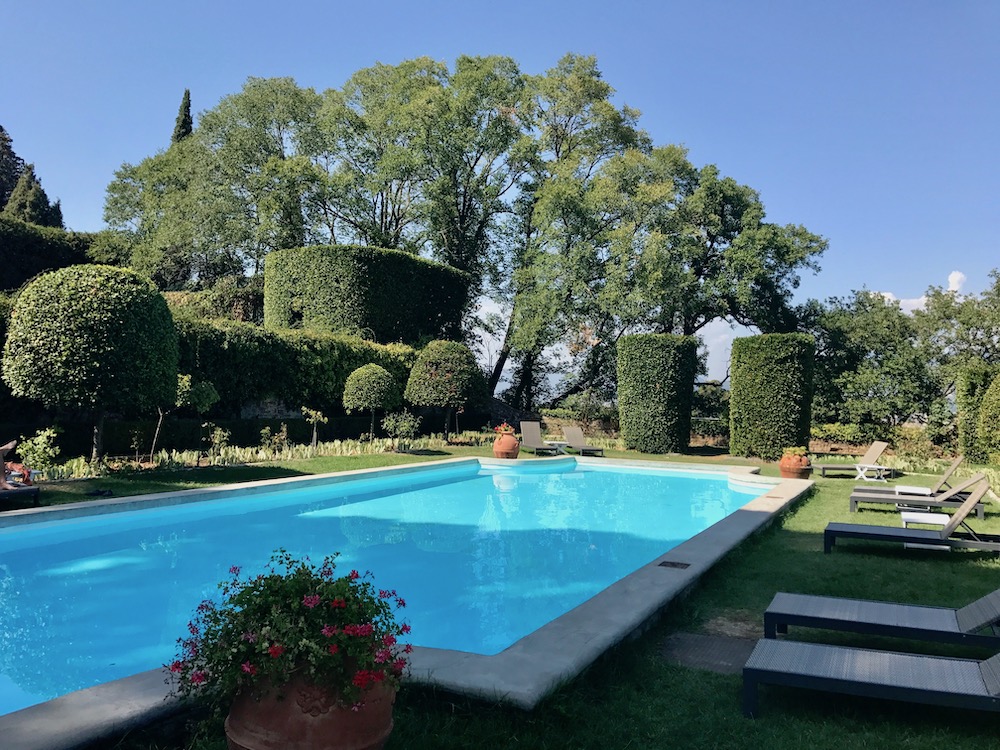
Hotel Torre di Bellosguardo is further removed from the city center and up in the hills in a magnificent villa dating back to the year 1200. This property is quintessential Tuscany. We were surrounded by a breathtaking landscape overlooking the city and stayed in a two-floor suite connected by a spiral staircase that blew our minds. The rooms were beautifully furnished with charming antique pieces. There was a large rounded window in a niche overlooking the entrance lobby and eye-level with 15th century frescoes. On the opposite wall, were floor to ceiling windows spanning the two floors and showcasing a stunning landscape. The bathroom had old-fashioned yet very well maintained fixtures including a freestanding tub with a hand-held shower attachment. The towels, robes and toiletries were abundant and luxurious. The grounds were beautiful and included a pool, a small organic garden and farm. We were further away from the city center and relied solely on taxis to get around since there was no shuttle service. This hotel was quiet and we saw only a few guests in the mornings at breakfast. Overall, it was a peaceful sanctuary and the perfect place to end our vacation. This is a memorable hotel that I recommend for its beauty and history but one must keep in mind its limited accessibility to the city center. I booked this hotel at the beginning of February for this three-night stay, which cost about $1600 (€450 per night plus extra charges to room during our stay).
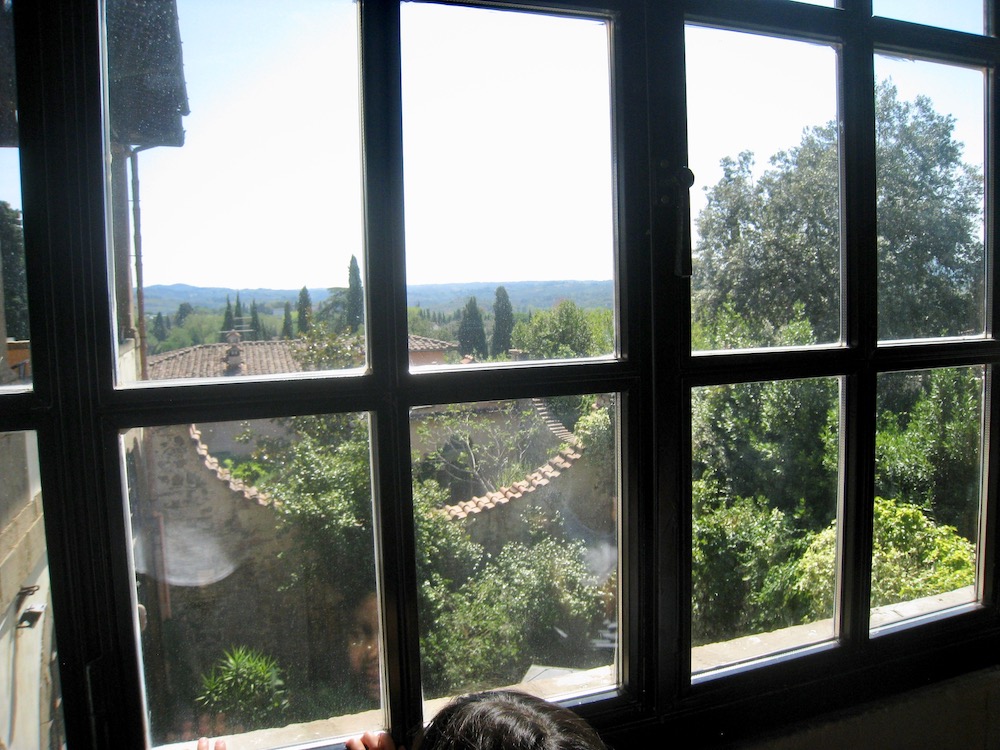


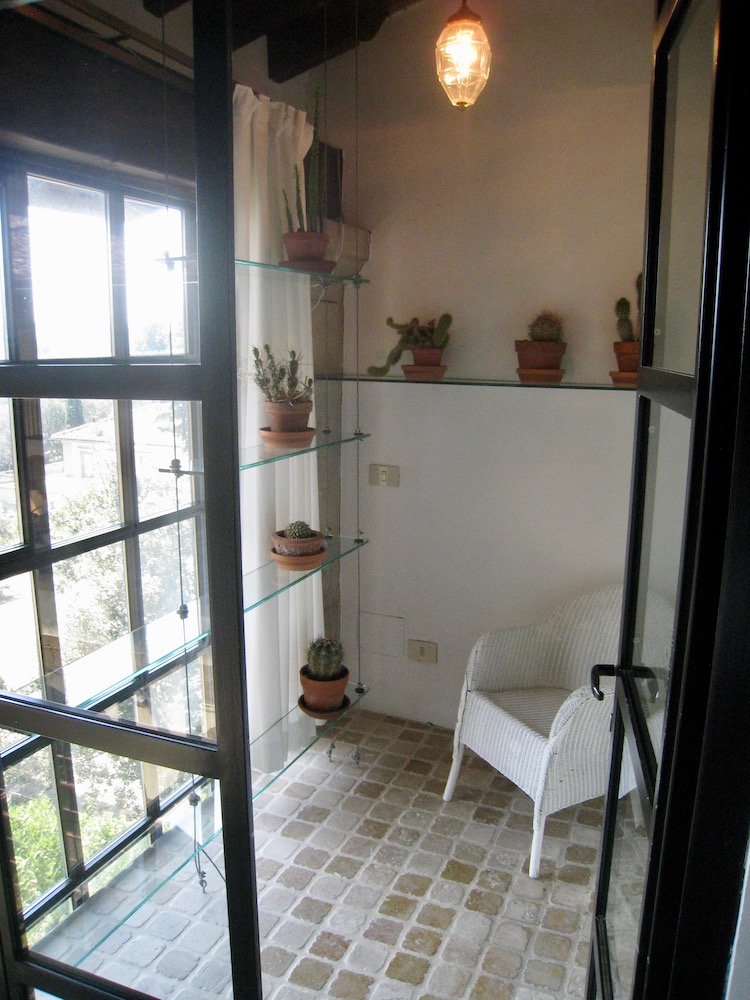
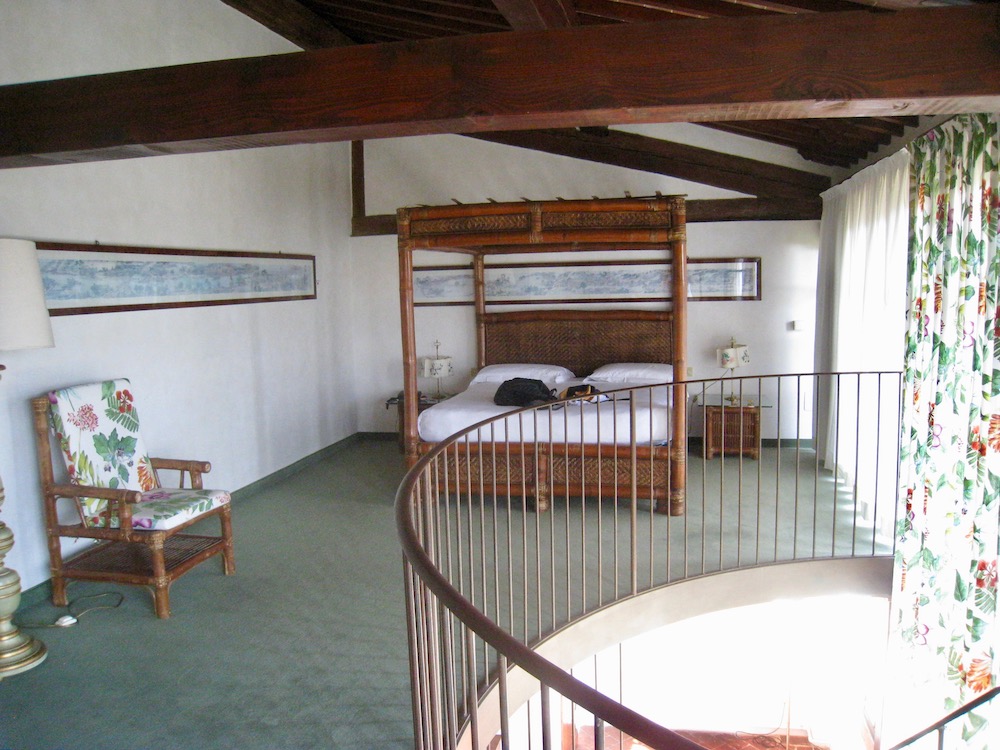
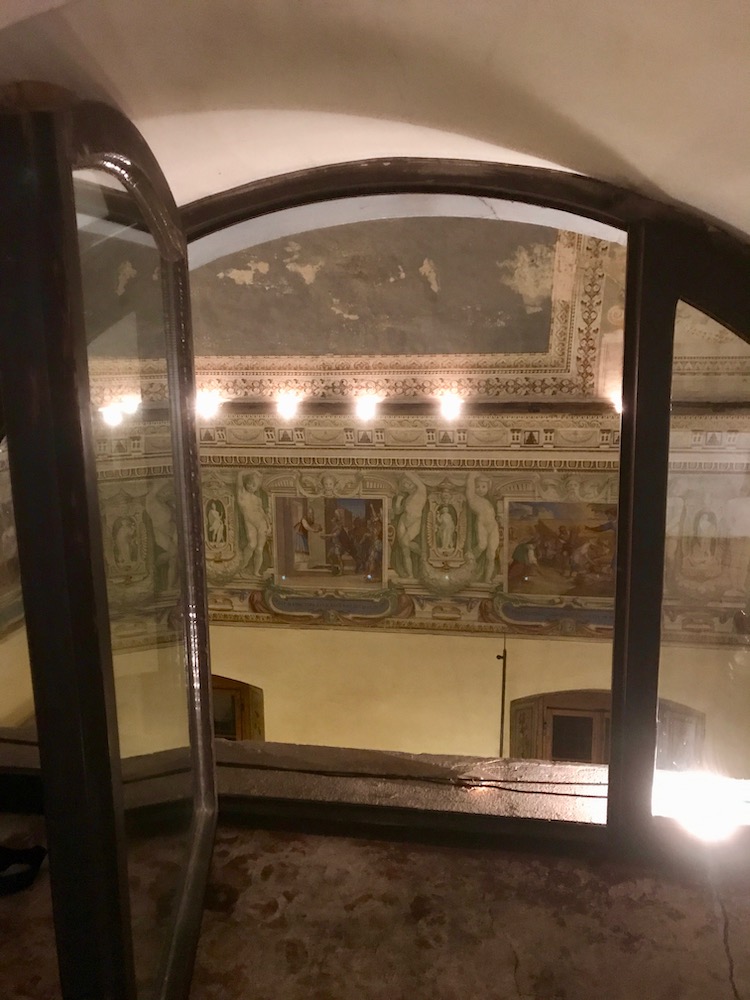
Florence Itinerary
I put together a practical itinerary that gave us plenty of exposure to Florentine history as well as to this city’s contemporary vibe leaving time to savor a glass of wine poolside before we went to dinner in the evenings.
On this vacation we instituted three traditions that catered to the kids: daily pool time; Fanta with dinner (they do not drink soda at home); and gelato after lunch and dinner. These perks helped to keep their minds open during days of semi-ambitious sightseeing when temperatures soared as they do in late August.
At one point during this vacation, my daughter narrowed down our sightseeing categories to church, palace or museum and would inquire daily as to which we were planning to see and in what order. On days when I knew we were planning to go inside a church, I made sure to wear something modest yet comfortable such as light, loose pants and tank top or long, flowing dress that went below the knees and always brought along a scarf because women are expected to cover their shoulders and knees. The women in Florence dress beautifully and I did my best to keep pace with fashionable yet functional outfits.
Day 1
About two months prior to leaving for Italy, I had purchased skip-the-line tickets for an 11:00 am admission to the Uffizi Gallery where we spent a couple of hours walking through the galleries with a brief detour onto the balcony where we took in views of the surrounding area. We approached this museum as we do the Metropolitan Museum of Art in New York – with acceptance that we will not see everything in one visit. Our day at the Uffizi consisted of seeking out the greatest hits which include the following works of art.
- Giotto’s Ognissanti Madonna, c. 1300-1305
- Sandro Botticelli’s La Primavera, c. 1480 and Birth of Venus, c. 1485
- Raphael’s Madonna of the Goldfinch, c. 1506
- Michelangelo’s Doni Tondo (Holy Family), 1505-1506
- Titian’s Venus of Urbino, 1538
- Artemisia Gentileschi’s Judith Beheading Holofernes, c. 1620
The galleries are filled with tourist groups but we were able to maneuver around them without too much interference. The galleries are warm but the small café on the balcony selling bottled water helped us to extend our visit a little longer before moving on with our day.
The building housing the Uffizi Gallery was commissioned in 1560 by Cosimo I de’ Medici, to house all of the public service and administrative Uffizi (offices) of Florence under one roof. This commission was entrusted to architect, artist and writer Giorgio Vasari, best known for his pioneering art history text The Lives of the Most Eminent Painters, Sculptors and Architects, first published in 1550.
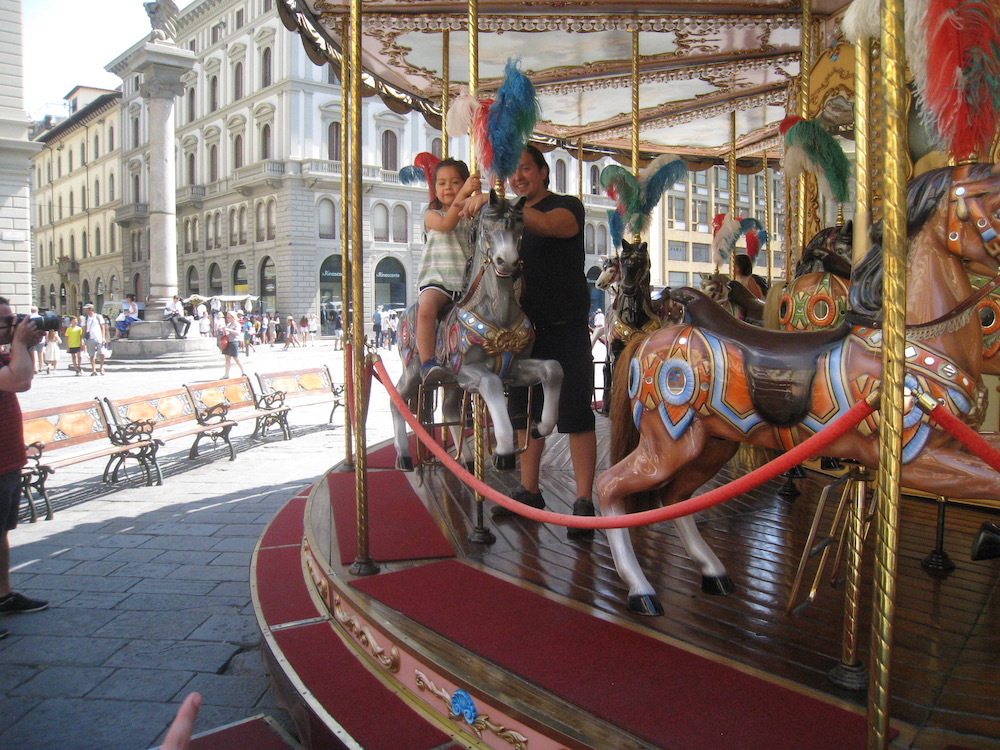
On our way to the Uffizi, we had walked past Orsanmichele and its niches filled with replicas of sculptures representing the Florentine guilds. This building was rebuilt in 1337 as a combined shrine, wheat exchange, and granary. The fourteen niches on the ground floor level were assigned to the leading guilds in Florence who then commissioned artists to execute statues of their patron saints to fill these niches. Artists including Lorenzo Ghiberti, Donatello, Nanni de Banco, Andrea del Verrochio and more completed the statues between 1411 and 1429. We made a quick stop inside the church but put off a visit to the museum housing the original sculptures from the niches for another day. I made the mistake of not checking this museum’s hours and was later disappointed to find it closed when we returned on our last full day in Florence. Apparently, the museum has limited hours and is only open on Mondays and Saturdays. I recommend checking the website ahead of time.

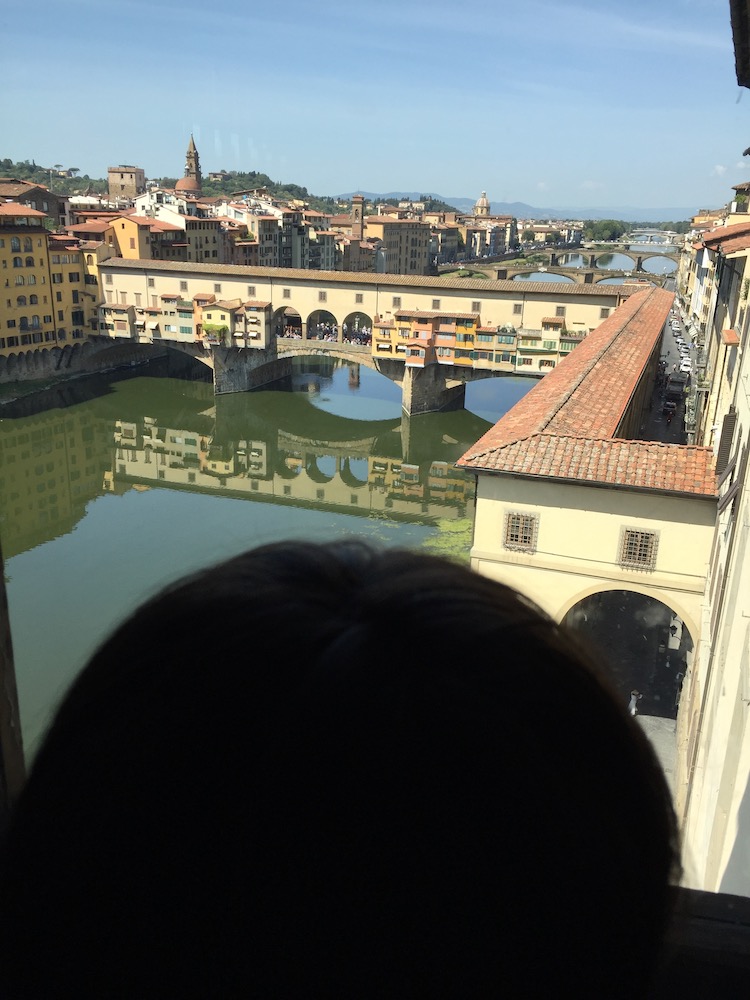

Then we wandered across the Ponte Vecchio and eventually made our way back to the hotel where we relaxed by the pool. Before sunset, we went up to the Piazzale Michelangelo to take in the sweeping views of Florence after which we walked down the hill and had a lovely dinner at Hosteria del Bricco.
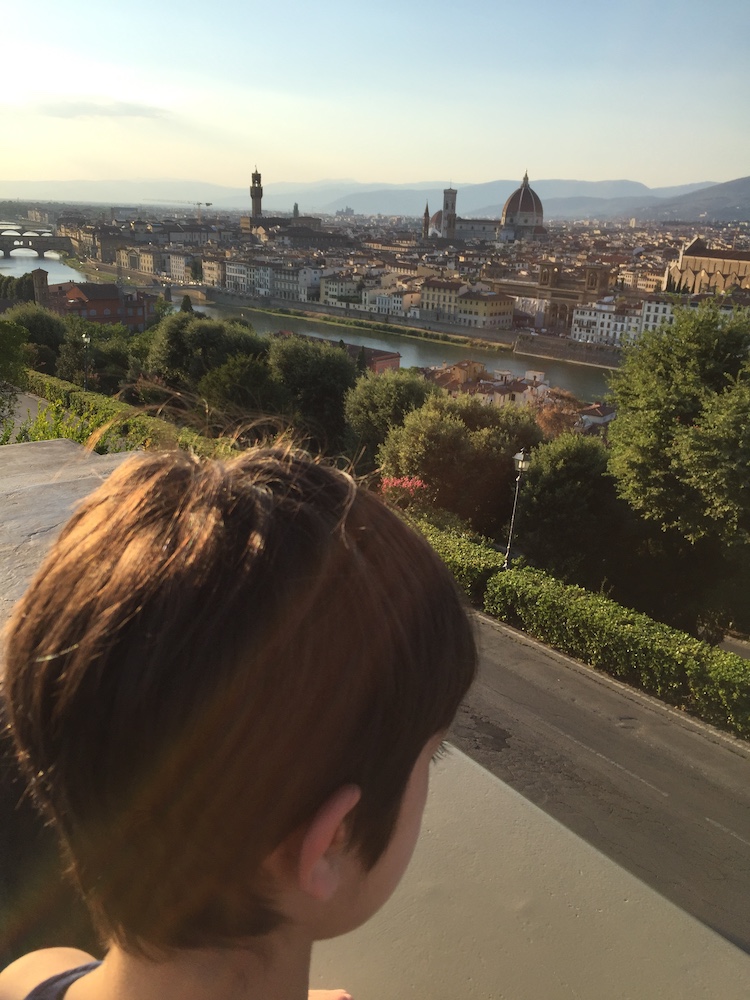
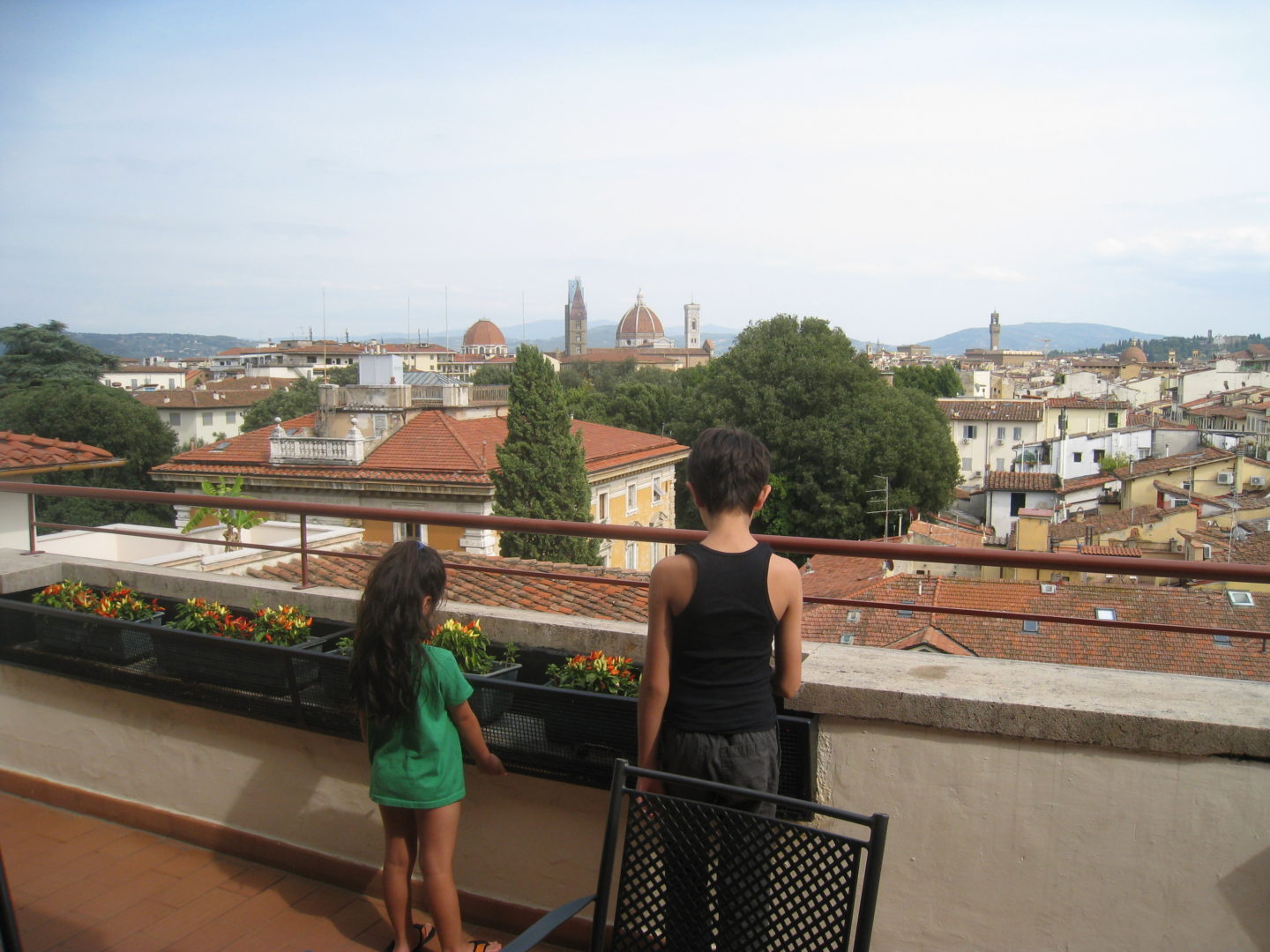
Day 2
We had skip-the-line tickets, also purchased ahead of time, for 10:30 am admission to the Accademia Gallery to see Michelangelo’s David (1501-1504). This world-renown sculpture is located in the main gallery just beyond the entrance and was surrounded by large crowds of tourists. The crowds where hilariously shushed by museum guards who sought to preserve an environment of quiet contemplation. This museum is worth the visit assuming tickets to skip the line are purchased ahead of time because we spent no longer than an hour here.

Then we walked over to the Monastery of San Marco to see the frescoes by the artist Fra Angelico, painted between 1439 and 1443, in the small rooms of the priory where each scene was intended as an aid for monks in their meditation and prayer. We did not need to buy tickets ahead of time and this was a nice stop and on the way to the Duomo.
Florence cathedral (the church of Santa Maria del Fiore), Baptistery, Museo dell’Opera del Duomo
Standing before the Duomo, we admired Brunelleschi’s dome (completed in 1436) up close and from inside the cathedral. We did not climb the dome because I have a fear of heights and we felt that the 463-step climb would be too much for the kids, especially for the 4 ½ year old. For those brave enough to do so would need to reserve ahead of time. There was a line to enter the cathedral, so we decided to return after lunch and ended up waiting about 30 minutes. To break up the time, the kids were treated to one of their two daily doses of gelato with their dad while I held our spot in the line. Ladies have to keep in mind that modest attire is required which means shoulders and knees must be covered. If you are not prepared, there are plenty of venders around that sell scarves to cover up.
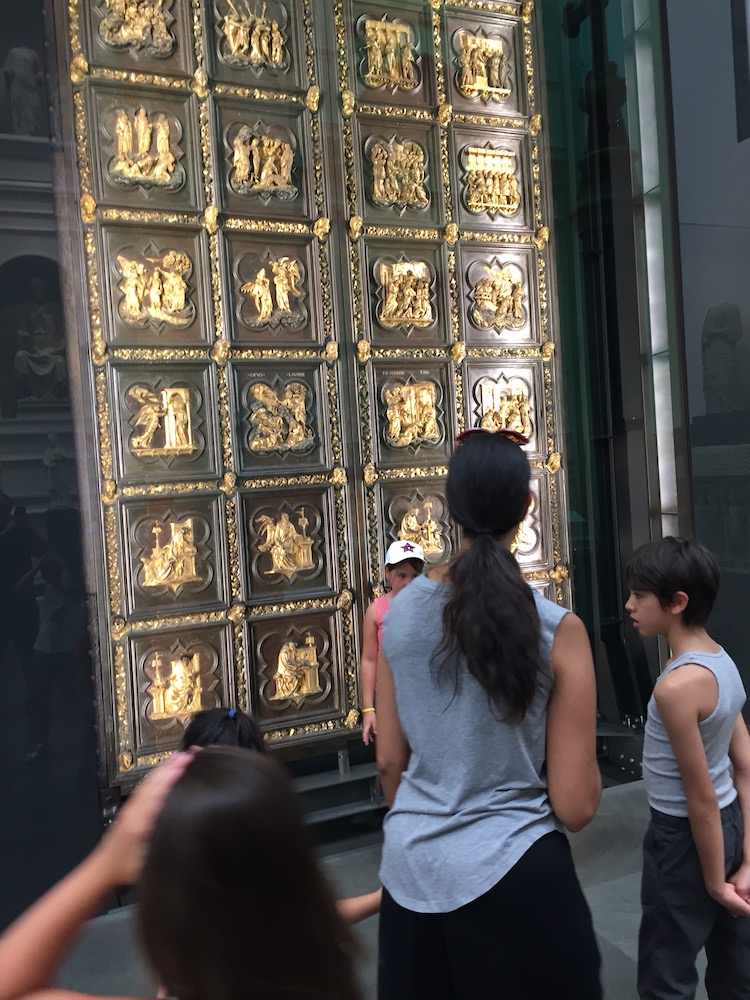
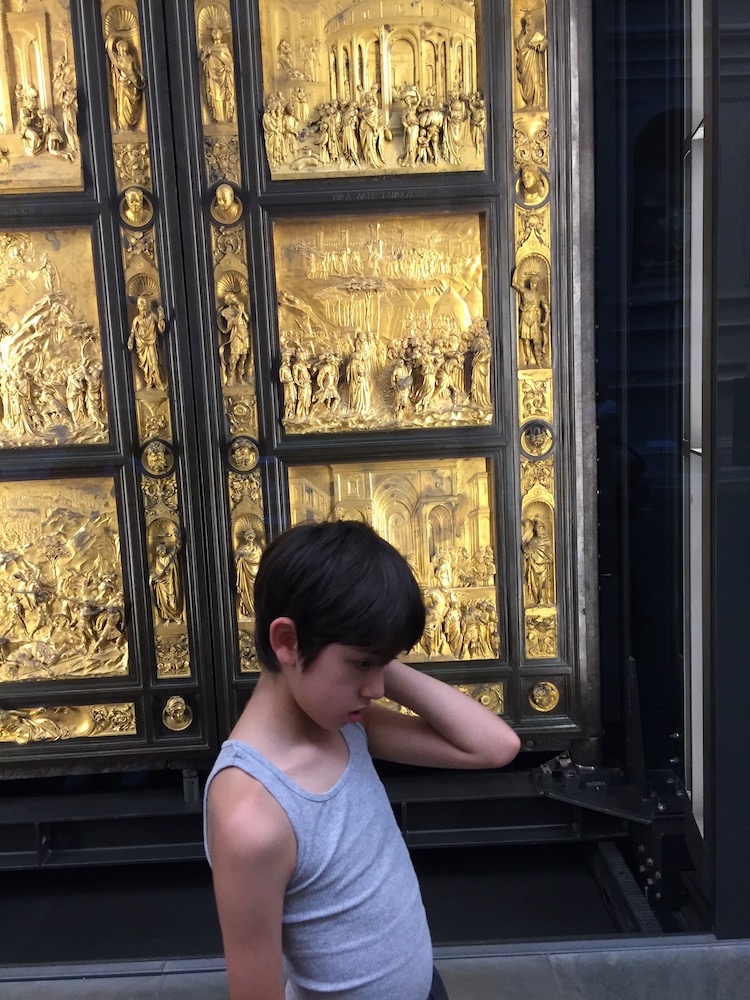
Prior to lunch, we did have time to visit the Baptistery next to the cathedral where replicas of Andrea Pisano and Lorenzo Ghiberti’s bronze panel doors can be viewed in situ before we went over to the Museo dell’ Opera del Duomo to see the original sets of doors. Around 1330, Andrea Pisano completed the South Doors, which consist of 28 quatrefoil panels depicting scenes from the life of St. John the Baptist. The artist Lorenzo Ghiberti won a 1401 competition to complete the North Doors illustrating stories from the New Testament, which he did in 1424. Ghiberti completed the. In 1452, completed the ten square panels comprising the magnificent East Doors, the Gates of Paradise, illustrating scenes from the Old Testament. This set of doors is High Renaissance par excellence and to stand before them was a special experience. Tickets for entrance to the Baptistery and the Museo dell’ Opera del Duomo were purchased at the time of our visit, as there was no wait to enter either building.
A museum guard at Museo dell’ Opera del Duomo recommended lunch at a nearby restaurant, Yellow Bar, which was perfect before we returned to the hotel to relax by the pool. We had a delicious dinner paired with the best wine at the Michelin-rated Ristorante La Giostra. I fell in love with their handmade ravioli filled with cheese and pear and enjoyed a steak covered in a thick balsamic vinaigrette. It was so good, we made reservations to return the following evening.
Day 3
Palazzo Medici-Riccardi, Michelozzo
After breakfast we walked over to the Palazzo Medici-Riccardi, commissioned by Cosimo de’ Medici, also known as Cosimo the Elder (1389-1464), in 1445 and eventually purchased by the Riccardi family in the mid-seventeenth century. We had a nice time walking through the rooms of this palace that included a small contemporary art exhibition on the ground floor. We purchased tickets at the time of our visit, as this is another site that is not overwhelmed with crowds and worth a visit if you are interested in the Medici family.
We then made our way over to the Museo Nazionale del Bargello housed in a buildings dating back to medieval times. It served as a prison during the eighteenth century and then became a museum in the mid-nineteenth century. I was pleasantly surprised by its charmingly quiet and peaceful space. There were no crowds and it is not necessary to purchase tickets ahead of time. This museum is the home of two bronze sculptures of David, as in David and Goliath from the Bible: Donatello’s David, c. 1446-60 and Andrea del Verrocchio’s David from the early 1470s.


Once again, we had lunch at Yellow Bar, returned to the hotel to swim and then had dinner at Ristorante La Giostra before we departed for the Cinque Terre the following morning.
Day 4
Pitti Palace, Boboli Gardens and Forte de Belvedere

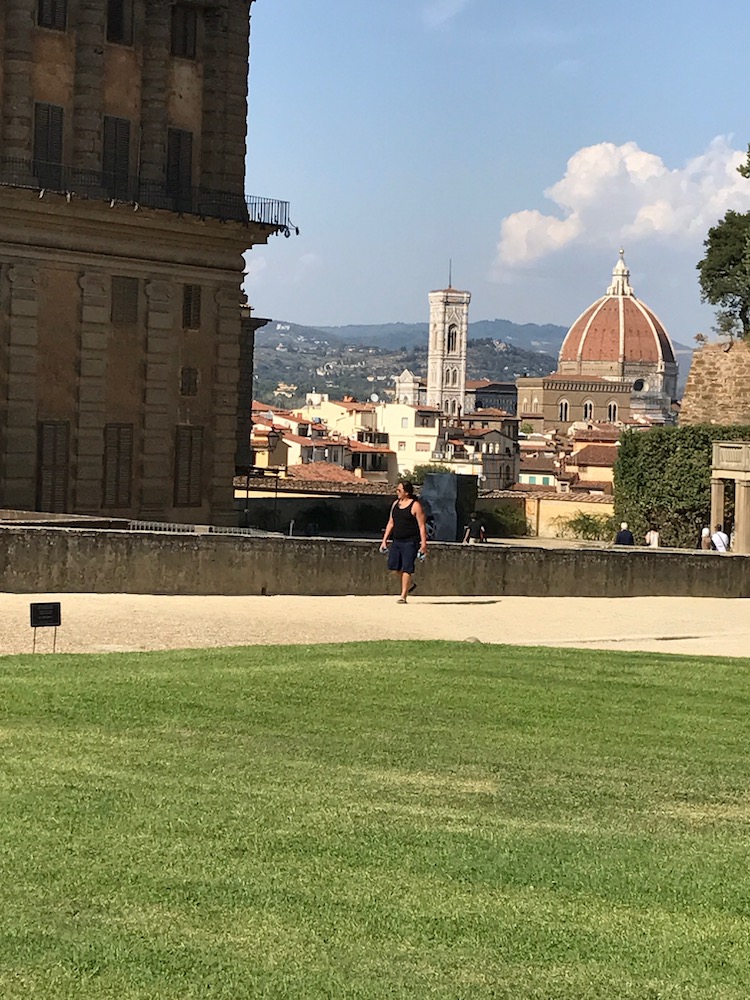
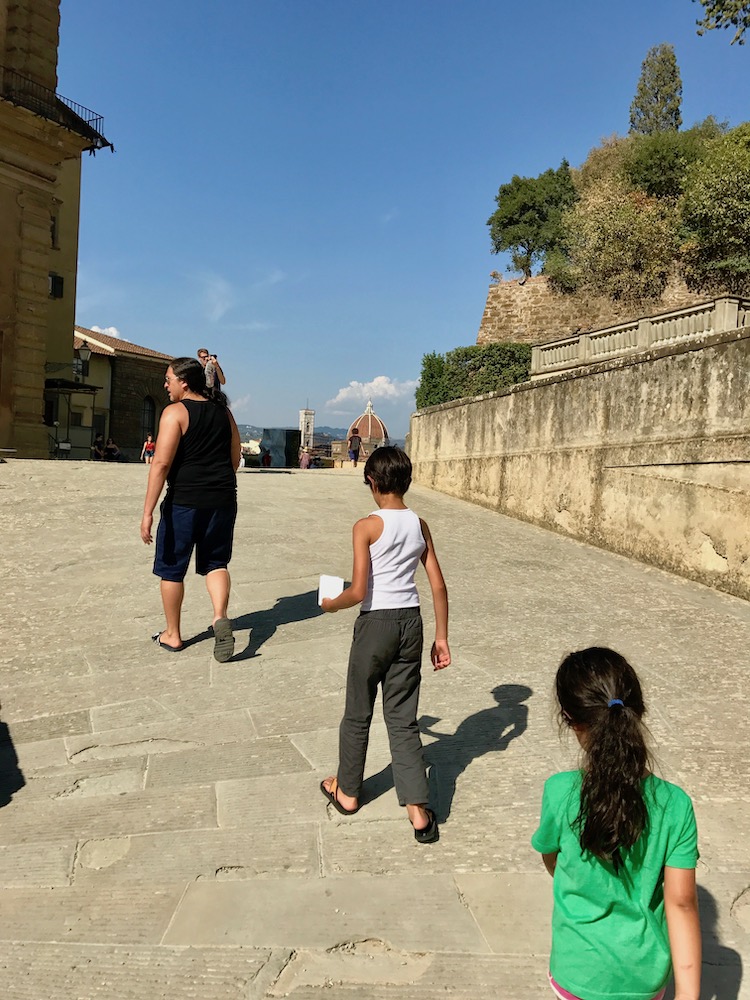
After returning to Florence the previous day from a week of relaxation in the Cinque Terre, we began our next full day in Florence with a visit to the Pitti Palace, named after its first owners who built it in the mid-1400s. It was later purchased by Cosimo I de’Medici in 1550 and currently houses four museums. In an effort to avoid museum overkill, we bypassed the museums and went onward to explore the Boboli gardens where there was plenty of art to be seen without the restraint of being indoors.
We then made our way to the Forte de Belvedere where we had the pleasure of seeing Gino de Dominicis’s (1947-1998) monumental installation Calamita Cosmica as part of the Ytalia exhibition that had sprinkled contemporary works of art around art institutions in Florence including Forte de Belvedere, Uffizi, Palazzo Vecchio, Pitti Palace, and Boboli Gardens, and more. Seeing these injections of contemporary art around the city of Florence was a surprising treat.
It was not necessary to purchase tickets ahead of time to visit any of these three sites.
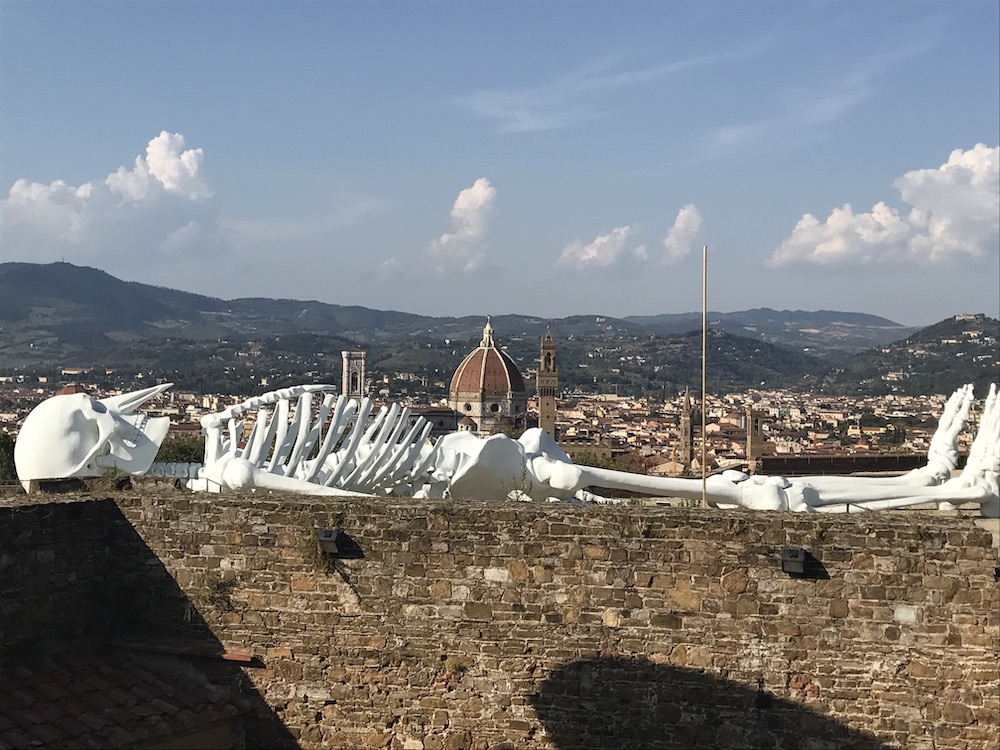
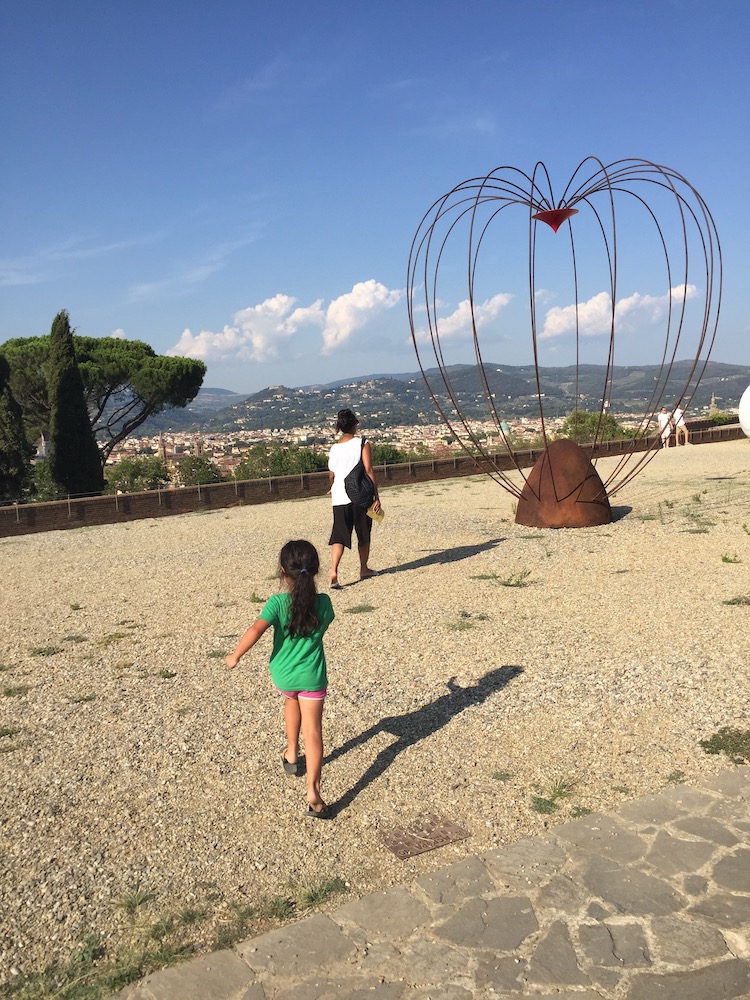
Since our hotel for this portion of our trip was a little removed from the city center, we decided to extend our day and have an early dinner at Osteria Santo Spirito before returning to the hotel to relax.
Day 5
On our last full day in Florence, we finally went inside the Palazzo Vecchio after passing by this building numerous times. This medieval building was built in the early 1300s and was originally known as the Palazzo dei Priori before it become known as the Palazzo Vecchio (Old Palace) after the Medici family relocated their family residence to the Pitti Palace across the Arno river in the mid-sixteenth century. We also purchased tickets at the time of entrance and enjoyed walking through its rooms on our last day in Florence.
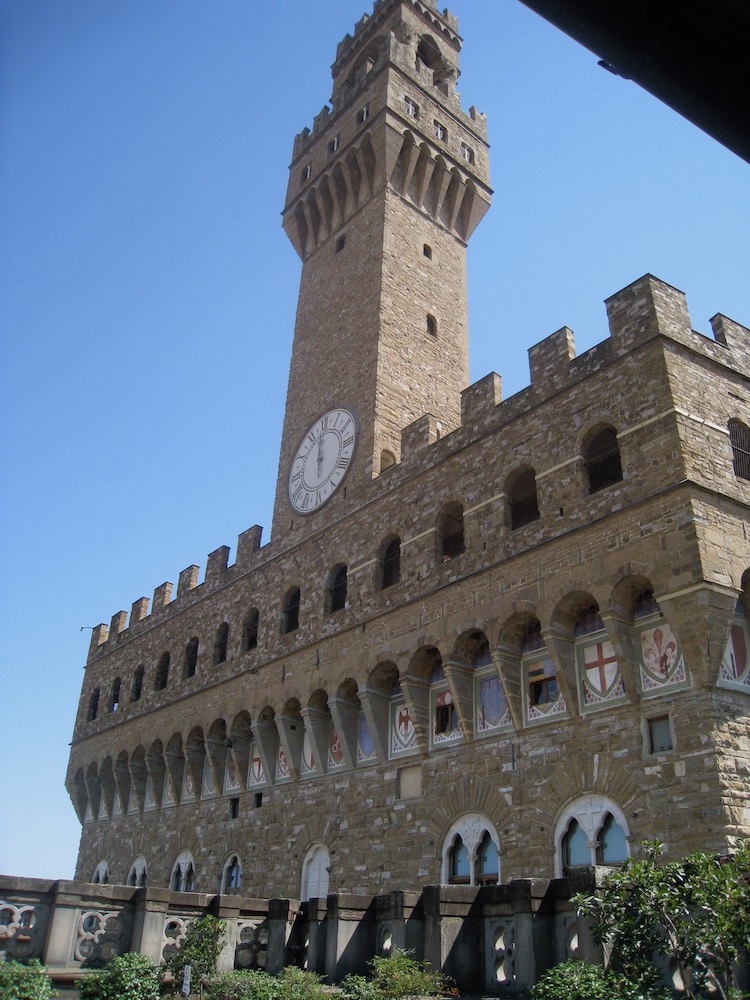
All of my advanced planning was exhausted by the last day and we tried to go about our day off the cuff, which proved that prior preparation is always the best strategy. As mentioned earlier, we had hoped to visit the Orsanmichele museum but it was closed and then walked over to Santa Maria del Carmine to see the Brancacci Chapel and the frescos by the artist Massaccio painted around 1425. This church was also closed but it is on my short list of places to seek out upon our next visit to Florence.
We returned to our hotel oasis in the hills to relax by the pool and pack for our departure the following morning. Our final dinner in Florence was spent at Trattoria Al Tranvai followed by one last stop at a gelato stand.

Final Thoughts on Florence
The Medici family of centuries past loomed large during our days exploring Florence where examples of this family’s majestic power and patronage were ubiquitous. Stimulated by the Medici’s role in Florentine history, art and architecture, my husband left Italy inspired, motivated, clear-headed and ready to dive back into his own creative journey as a healthcare practitioner and business owner in New York. While the children may not articulate in a manner similar to my husband the positive impacts of world travel that includes exposure to art through the centuries, their worldview is undeniably expanded and we see the benefits through the way they speak, play, learn and interact with others. I thrive on this type of response and feel reassured that sharing my passion for art and travel cultivates the family dynamic I had always desired.
I can go on for days about the wine and cuisine. Many people told us ahead of time that we would find good quality and inexpensive house wine everywhere, which we did but we also went up a tier or two and tasted some of the best wines ever. These wines were clean and did not leave us feeling hung over the next morning. If anything, after a bottle or two with dinner or back at the room, I woke up energized and ready to go the next day and because it was vacation I did not hesitate to indulge in a crisp glass of white with lunch. The kids had their fill of pizza, homemade pasta and gelato. In addition to these delights, the adults enjoyed the Florentine bistek and numerous other dishes. Our first night in Florence we ate at Trattoria Armando, which was walking distance from our hotel and the perfect introductory meal to Florentine cuisine.
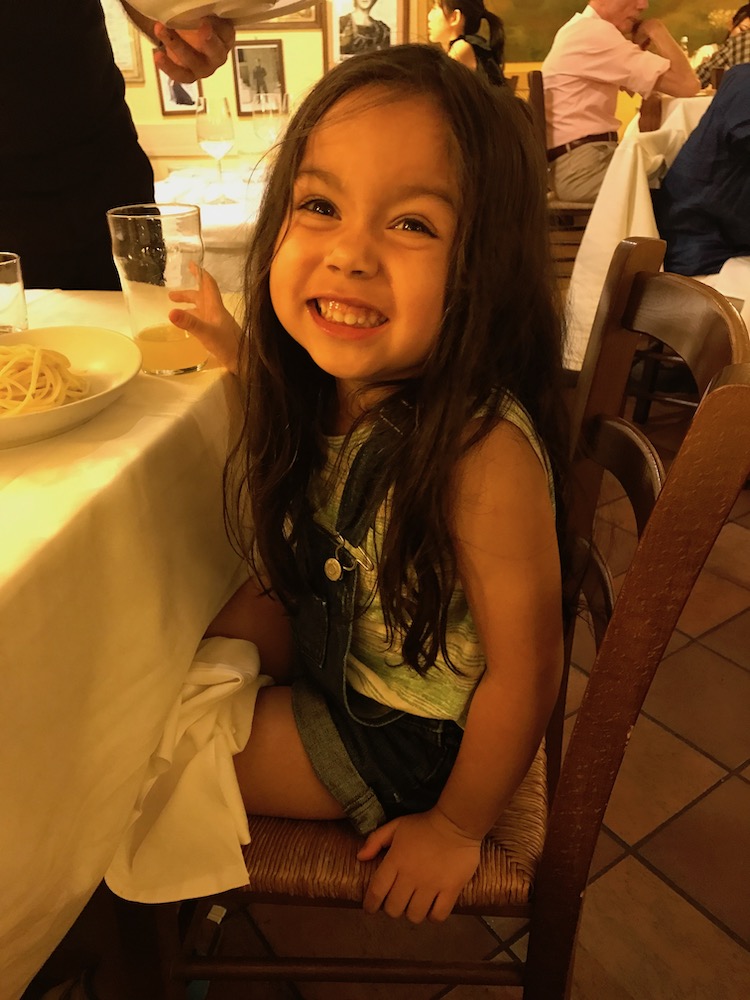
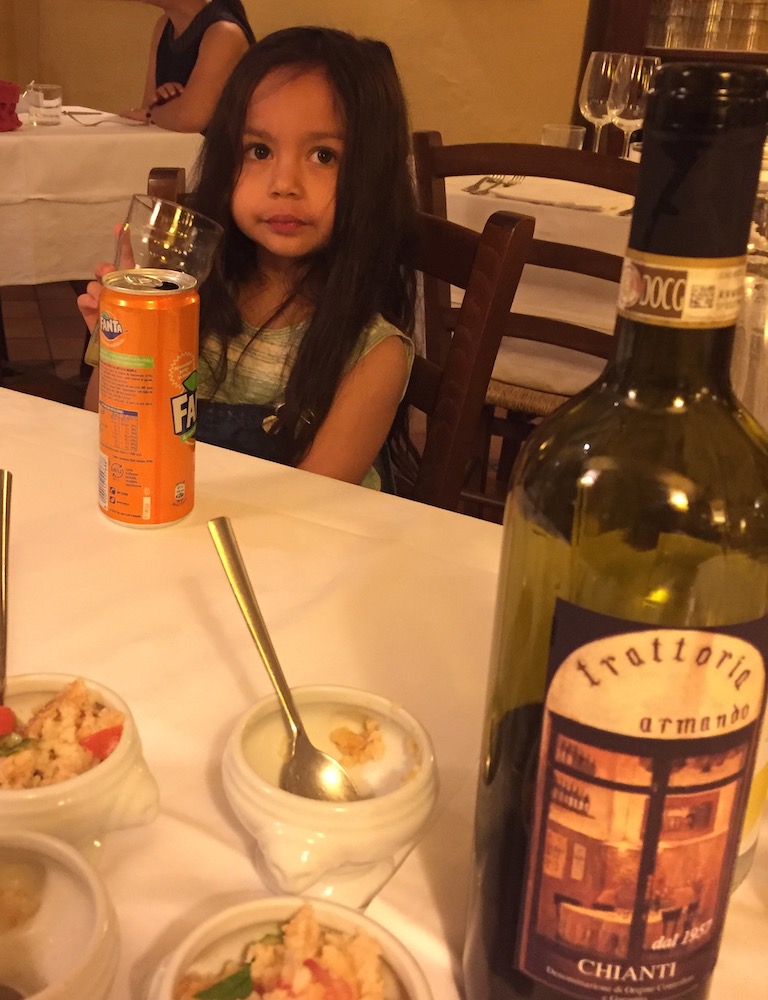
Florence was incredibility easy to navigate and was an ideal first city to explore as tourists with children. We had no problems with communication throughout and mainly relied on taxis to get around which made life simple. This was a productive first go at Florence and I look forward to returning again in the near future to retrace our steps and forge new paths in this city and beyond into other parts of that region.
Our first trip to Italy was a success and it marked the beginning of a new chapter for our family.
Recommended Reading
- Brunelleschi’s Dome: How a Renaissance Genius Reinvented Architecture by Ross King, 2013
- The House of Medici: Its Rise and Fall by Christopher Hibbert, 1999
- An Art Lover’s Guide to Florence by Judith Testa, 2012
For more about family travel click here.
Click here if you are looking for a little guidance planning your next vacation.





